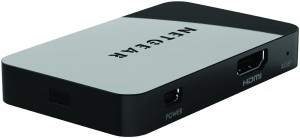At the NEFAR rocket launch last weekend, I had my Phantom 2 Vision quadcopter report “Control Signal Lost.” I found that it happened each time that I tried to increase the altitude above about 250 feet. The control signal is supposed to function at up to 1000′ distance.
Today, I took the quadcopter to the local schoolyard to do some tests. I flew the ‘copter about 20 feet in front of me and took it up to 250’ in altitude. As I slowly tried to go higher, the “Control Signal Lost” message appeared. It went away quickly though and I “yawed” the Phantom in a circle to confirm that I was still in command. But, being cautious, I then descended.
I repeated the experiment a couple of times and each time, at between 250 to 300 feet up, the signal went away, but only briefly. Each time, I reduced the altitude just in case. In similar situations, I had the Phantom enter its “Return to Home” fail-safe mode a couple of times at the NEFAR launch. I tried repositioning the transmitter’s antenna, but it seemed to have little effect on the problem.
Next, I brought the Phantom down to about 100 feet in altitude. I flew it about 500 feet away (the farthest I could go and stay over the grass field) and the signal lost message did not appear.
Finally, I positioned the Phantom about 200 feet away from me and I was able to take it up to 300 feet without any indication of signal lost.
It may only happen when the ‘copter is oriented in a certain direction relative to the transmitter. I didn’t think to test that.
I’ll watch for the problem in the future, but for now, I’m not too concerned. I am able to fly higher as long as the Phantom is far enough from me and I had no problem regaining control when it was lost.

